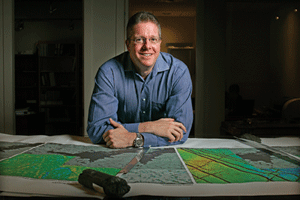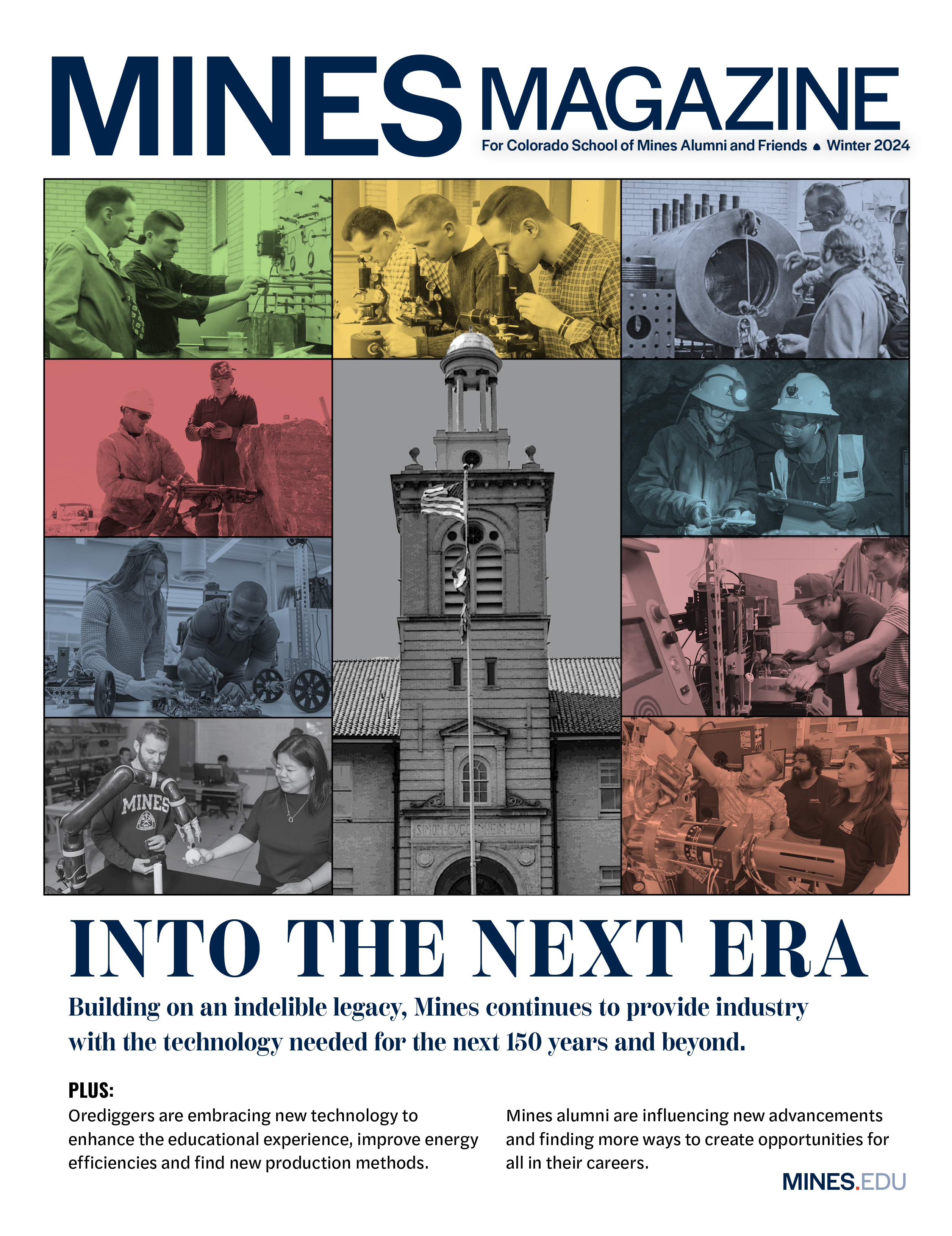 Bryan Lees ’85 makes his living from mining. But he’s not hauling hundreds of tons of dirt out of a mountain; instead, he’s carefully chipping away at the walls of old mine shafts searching for gems and minerals. The owner of a world-renowned mineral specimen and gemstone mining company, Lees has collected rocks since he was a kid (“pebbles in neighbors’ driveways,” he laughs). But it wasn’t until he got to Mines, that he realized it could be a vocation, not just a hobby.
Bryan Lees ’85 makes his living from mining. But he’s not hauling hundreds of tons of dirt out of a mountain; instead, he’s carefully chipping away at the walls of old mine shafts searching for gems and minerals. The owner of a world-renowned mineral specimen and gemstone mining company, Lees has collected rocks since he was a kid (“pebbles in neighbors’ driveways,” he laughs). But it wasn’t until he got to Mines, that he realized it could be a vocation, not just a hobby.
“In school, I met a guy in the field who was collecting and selling minerals,” Lees says. “I had been to mineral shows, but I had no concept of selling these things� It was like a little light bulb went off.”
He met his wife, Kathryn (Lenstrom) Lees ’87, at Mines. And in 1985, before either one had graduated, and while Bryan was contending with the added load of the McBride Honors program, the young couple started�Collector’s Edge Minerals. “We didn’t have much money for equipment,” he says. “Big mining projects were sort of a fantasy.” They started out buying and selling minerals for collections around the world and after a few years invested in a barite mining project in northeastern Colorado.
“We got extremely lucky,” Lees says, finding big pockets of barite crystals in 1989. The find enabled them to begin developing Collector’s Edge into one of the first companies dedicated solely to the mining of mineral specimens.
In 1991, they leased an old silver mine in Alma, Colo., and solicited investors to underwrite the mining of rhodochrosite, a blood-red mineral that had been found, and largely discarded, during the mine’s silver heyday. Rhodochrosite proved to be the Lees’ jackpot.
A film crew from the Denver Museum of Nature and Science, at the mine for some routine footage, captured Lees reaching into a hole and pulling out the largest rhodochrosite specimen ever found: the “Alma King.” It can now be seen at the Coors Mineral Hall exhibit in the museum, as can an entire six-foot pocket from the mine, painstakingly reconstructed by Lees and his staff.
By 1999, the Lees had seven concurrent projects worldwide, from Brazil to Namibia. Along the way, Lees developed innovative mineral extraction and preservation techniques, for which he received the prestigious Carnegie Mineralogical Award in 1998 and the Mines Medal in 2003.
Today, the Collector’s Edge showroom and warehouse in Golden contain the world’s most advanced specimen preparation laboratory, in addition to thousands of mineral specimens for sale, from museum-quality collector’s items to wholesale bargains.
“None of this would exist if I hadn’t gone to Mines,” says Lees, who founded the advisory board for the school’s Geology Museum.
“Bryan brings a valuable perspective from the mineral collecting world,” says Museum Director Bruce Geller, adding that the sale of rhodochrosite specimens donated by Lees has helped the museum further develop its world-class exhibits.
“It’s been amazing,” Lees concludes, “to turn a childhood interest into a business that actually works.”



